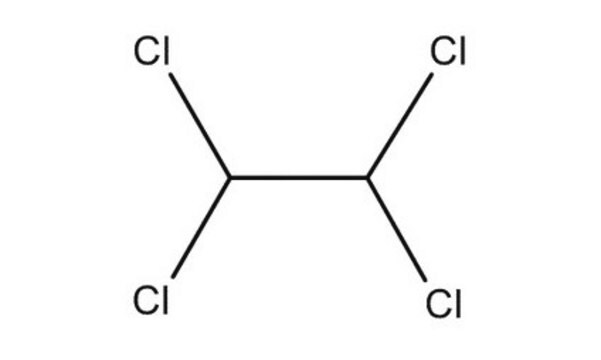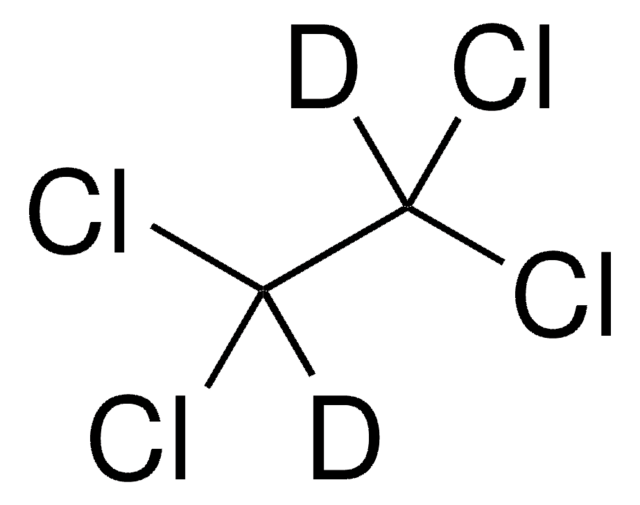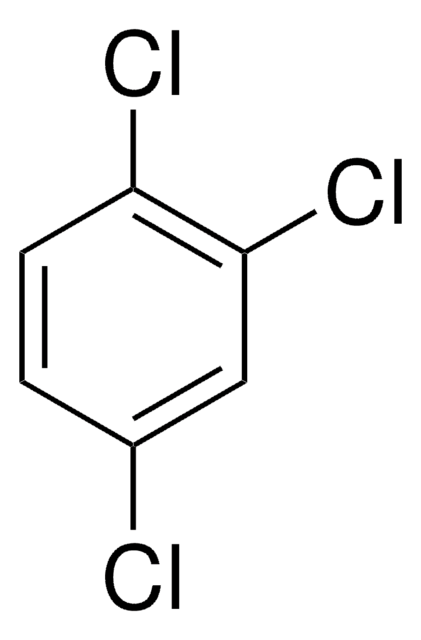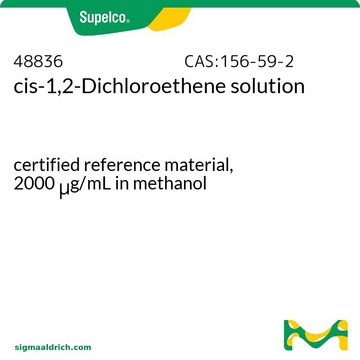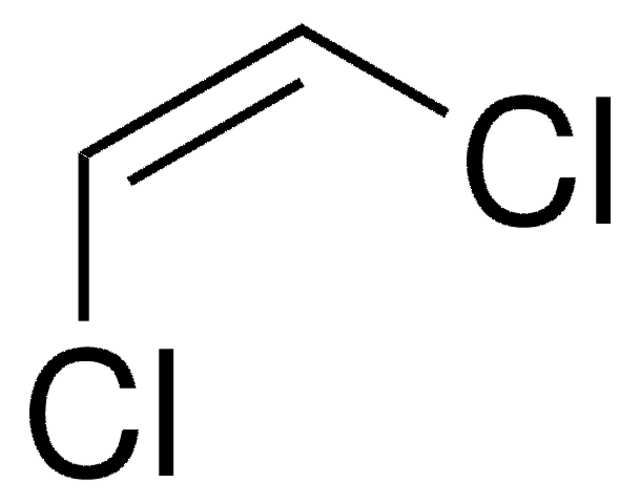185434
1,1,2,2-Tetrachloroethane
reagent grade, ≥98%
Sinonimo/i:
Acetylene tetrachloride
About This Item
Prodotti consigliati
Grado
reagent grade
Livello qualitativo
Densità del vapore
5.8 (vs air)
Tensione di vapore
8 mmHg ( 20 °C)
Saggio
≥98%
Stato
liquid
dilution
(for analytical testing)
Indice di rifrazione
n20/D 1.494 (lit.)
P. ebollizione
147 °C (lit.)
Punto di fusione
−43 °C (lit.)
Densità
1.586 g/mL at 25 °C (lit.)
Stringa SMILE
ClC(Cl)C(Cl)Cl
InChI
1S/C2H2Cl4/c3-1(4)2(5)6/h1-2H
QPFMBZIOSGYJDE-UHFFFAOYSA-N
Cerchi prodotti simili? Visita Guida al confronto tra prodotti
Categorie correlate
Descrizione generale
Applicazioni
Avvertenze
Danger
Indicazioni di pericolo
Consigli di prudenza
Classi di pericolo
Acute Tox. 1 Dermal - Acute Tox. 2 Inhalation - Aquatic Chronic 2
Codice della classe di stoccaggio
6.1A - Combustible acute toxic Cat. 1 and 2 / very toxic hazardous materials
Classe di pericolosità dell'acqua (WGK)
WGK 3
Punto d’infiammabilità (°F)
Not applicable
Punto d’infiammabilità (°C)
Not applicable
Elenchi normativi
Forniamo informazioni su eventuali restrizioni prevalentemente per i prodotti chimici. Per altre tipologie di prodotto siamo in grado di fornire soltanto informazioni limitate. Nessuna segnalazione significa che nessuno dei componenti è citato in un elenco. È dovere dell’utilizzatore assicurarsi che il prodotto venga impiegato in maniera sicura e a norme di legge.
EU REACH Annex XVII (Restriction List)
Scegli una delle versioni più recenti:
Possiedi già questo prodotto?
I documenti relativi ai prodotti acquistati recentemente sono disponibili nell’Archivio dei documenti.
I clienti hanno visto anche
Protocolli
US EPA Method TO-17: GC Analysis of Volatiles on VOCOL® after Collection/Desorption using Air Toxics Tube
US EPA Method 8260: GC Analysis of Volatiles on SPB®-624 after Purge & Trap using "K" Trap, Fast GC Analysis
Il team dei nostri ricercatori vanta grande esperienza in tutte le aree della ricerca quali Life Science, scienza dei materiali, sintesi chimica, cromatografia, discipline analitiche, ecc..
Contatta l'Assistenza Tecnica.